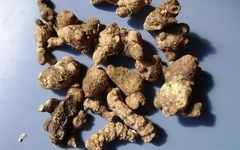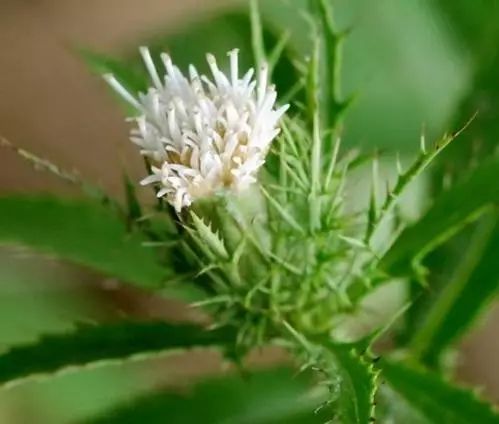
Introduction
Atractylodes (Cāngzhú) is known for its ability to alleviate various ailments, a concept originating from the Song Dynasty physician Xǔ Shūwēi. Xǔ Shūwēi, who had a penchant for drinking, damaged his spleen and stomach, leading to spleen deficiency and the inability to transform dampness. Atractylodes, being warm and bitter in nature, can awaken the spleen and transform dampness. After taking Atractylodes powder formed into pills for several months, his peculiar illness gradually improved until he was completely cured. This article elaborates on the efficacy and clinical applications of Atractylodes, packed with valuable insights.
Atractylodes has a pungent and bitter flavor, and is warm in nature. It belongs to the spleen, stomach, and liver meridians. Its functions include drying dampness, strengthening the spleen, dispelling wind, scattering cold, and improving vision. It is used for symptoms such as abdominal distension, diarrhea, edema, beriberi, rheumatic pain, wind-cold colds, and night blindness. Clinically, it is primarily indicated for fatigue and lethargy caused by dampness obstructing the spleen and stomach; abdominal distension; loss of appetite; nausea and diarrhea; phlegm-dampness; dampness and swelling; exterior syndromes with dampness; heavy pain in the head and body; warm-type arthralgia; and weakness in the limbs.
The Legend of Atractylodes
The Legend of Atractylodes
Once upon a time, there was a scholar named Xǔ, a title given to the renowned physician Xǔ Shūwēi of the Song Dynasty. It is said that in his youth, Shūwēi was exceptionally diligent, studying late into the night before going to bed. He had a habit of drinking before sleep, perhaps believing the saying, “A sip of wine before bed can extend life to ninety-nine years!”
Years later, he often felt a gurgling in his stomach, experienced pain in his side, and had a reduced appetite. Every ten to fifteen days, he would vomit a bitter and sour gastric fluid. In summer, his left side would not sweat, while only the right side would. What kind of strange illness was this? Xǔ Shūwēi fell into deep thought and sought treatment everywhere.
To his dismay, despite consulting many famous doctors, he found no relief, which caused him great distress. Thus, he abandoned the belief that “doctors cannot treat themselves” and began to save himself. He carefully analyzed his condition and concluded that his illness was primarily caused by “dampness obstructing the stomach.” Following his principle of “using precise medication,” he chose Atractylodes as the main herb, using 500 grams of Atractylodes powder, 15 jujubes, and 15 grams of raw sesame oil to form small pills, taking 50 pills daily. He gradually increased the dosage to 100-200 pills per day. After several months of treatment, his peculiar illness gradually improved until he was completely cured.
The Efficacy of Atractylodes
Why does Atractylodes have such efficacy and a unique therapeutic effect on Xǔ Shūwēi’s peculiar illness? It turns out that Xǔ Shūwēi’s fondness for drinking harmed his spleen and stomach, leading to spleen deficiency and the inability to process dampness. The spleen and stomach are interrelated, resulting in “dampness obstructing the stomach,” which manifested as gurgling sounds in the stomach, lack of sweating on the left side during summer, and vomiting gastric fluid.
The spleen belongs to the earth, which loves warmth and fragrant aromas. Atractylodes has a fragrant aroma, is pungent and warm, and belongs to the spleen and stomach meridians. The medicinal properties align with the symptoms. Atractylodes is aromatic and excels at awakening the spleen and transforming dampness. Dampness is a yin pathogen, which can be transformed with warmth. Xǔ Shūwēi accurately diagnosed his condition and selected the appropriate herb, achieving remarkable results with just one herb. It is also important to note that Xǔ’s insistence on long-term medication and gradually increasing the dosage was a wise strategy. He understood that dampness is sticky and difficult to eliminate quickly. Only by persisting with long-term medication and gradually increasing the dosage could he enhance the medicinal power within his body and ultimately conquer dampness.
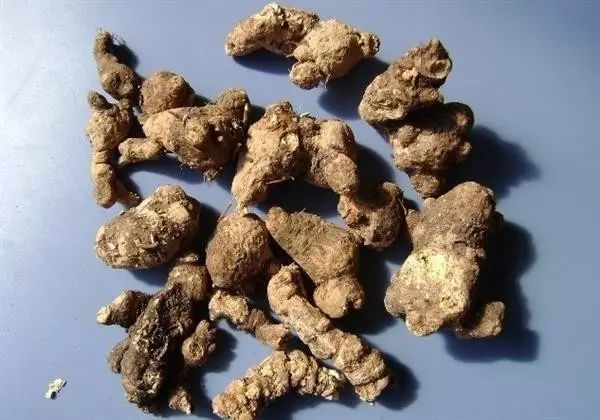
Treating Strange Illnesses with Atractylodes
Treating Rheumatism
The primary efficacy of Atractylodes is to strengthen the spleen and eliminate dampness, and it can also dispel wind and scatter cold. In traditional Chinese medicine, Atractylodes is commonly used to treat rheumatism. In ancient times, rheumatism was referred to as “bi syndrome,” believed to be caused by a combination of wind, cold, and dampness. However, due to the warmer climate in the south, dampness often combines with heat, leading to different types of rheumatism. Regardless of the type, Atractylodes can be used for treatment.
Here is a small formula: 30 grams of Atractylodes, 10 grams of cinnamon twig, and 30 grams of Euphorbia, boil these three herbs together and use the decoction to soak the painful areas, or apply a towel soaked in the herbal juice to the painful areas for effective relief from pain caused by rheumatism.
Treating Diabetes
Diabetes, known in traditional Chinese medicine as “Xiaoke,” includes water-damp type, yin deficiency type, and spleen-kidney yang deficiency type. Patients with the water-damp type generally have a whitish tongue with a thin white coating; those with the yin deficiency type mainly present with a red tongue, thin and rapid pulse, thirst, and dryness; while those with the spleen-kidney yang deficiency type show pale complexion, cold limbs, and abdominal distension.
Atractylodes is particularly suitable for patients with water-damp and spleen-kidney yang deficiency types. Here is a specific formula for treating diabetes—Atractylodes, 30 grams; Scrophularia, 15 grams; black sesame, 30 grams; and a bit of silkworm cocoon, decoct in water. The strong properties of Atractylodes can be balanced by the yin-nourishing effects of Scrophularia, while silkworm cocoon has been used since ancient times to treat diabetes, and black sesame nourishes the kidneys. This combination of four herbs is effective for treating diabetes.
Atractylodes Drink: Ensuring Health in Hot Summer
In hot weather, people often feel irritable and prefer cold drinks. However, excessive cold can harm the spleen, leading to symptoms such as fatigue in the limbs, reduced appetite, and sometimes even abdominal pain. Conventional wisdom tells us that the body is harmed by dampness and cold!But in such hot weather, we cannot avoid cold drinks or air conditioning. So how can we enjoy the coolness of summer while ensuring our health?
Recently, I returned to my hometown, and due to the hot weather, I consumed cold drinks on the way, resulting in reduced urination, abdominal pain, and diarrhea, with watery stools occurring more than ten times a day, accompanied by fatigue and loss of appetite. At that time, I took Rizhong Pills, but the effect was not significant. The next day, after careful consideration, I used 10 grams of raw Atractylodes soaked in water, and immediately felt my stomach and intestines relax, with smooth urination. That day, my diarrhea was cured, and my strength was restored.
Atractylodes drink is truly miraculous.In the following period, for patients with spleen deficiency and excessive dampness, I recommend using raw Atractylodes soaked in water as a tea, which has shown excellent results.
It can be said: “Atractylodes drink ensures health in hot summer!”
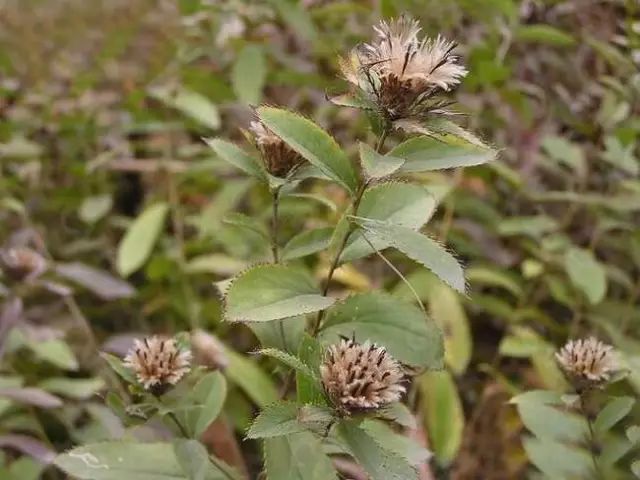
Discussing Atractylodes and Dampness
In the Yuan Dynasty, Zhū Zhènhéng stated: “Atractylodes treats dampness, effective in all areas, and can resolve various stagnations, including phlegm, fire, dampness, food, qi, and blood stagnation, all caused by abnormal transformation and movement, leading to diseases in the middle jiao. Therefore, the herb must facilitate both ascending and descending actions; to ascend, one must first descend, and to descend, one must first ascend. Thus, Atractylodes, belonging to the foot yangming stomach meridian, with its pungent and strong flavor, can invigorate the stomach and strengthen the spleen, facilitating the movement of qi and directly entering various herbs…” This is indeed a profound insight.In the Jin Dynasty, Liú Shǒuzhēn remarked: “Atractylodes is a herb that scholars should pay attention to.” This also indicates its broad efficacy. In my clinical practice, I have summarized four main uses of this herb.
The functions of the body’s organs depend on the spleen and stomach’s ability to transport and transform the essence of food and water. When the spleen is strong, all organs are healthy; when the spleen is weak, all organs are also weak, hence the saying, “The spleen is the foundation of postnatal life.” Atractylodes dries dampness without harming yin; when dampness is removed, the spleen becomes healthy, and when the spleen is healthy, dampness is transformed. Therefore, in treating chronic diseases, the principle of “the spleen governs all organs” is paramount, using Atractylodes as the monarch herb to invigorate the source of transformation and revitalize the body. For example, in cases of organ prolapse, hypokalemia, emphysema, and coronary heart disease, Atractylodes is effective, especially in treating elderly patients with spleen and stomach diseases.
It is said that “tonifying the spleen is not as good as strengthening the spleen, and strengthening the spleen is not as good as moving the spleen.” When the spleen’s movement is strong, qi and blood can be generated. Therefore, in traditional practices, when tonifying blood, cooked rehmannia is often accompanied by cardamom. This principle is often applied in rich tonifying formulas by adding Atractylodes to monitor the richness of tonifying herbs and promote their absorption. For example, in formulas like Gui Pi Decoction and Bu Zhong Yi Qi Decoction, Atractylodes is added to prevent fullness after taking the medicine. I once treated a patient with aplastic anemia who had previously taken strong tonifying herbs without improvement. After adding Atractylodes, the results were remarkable. It is also used in cold and cool herbs to prevent stomach damage, which is a clever application.
Phlegm and blood stasis are both sticky yin pathogens, so to transform phlegm and stasis, one must rely on the movement of yang qi. Atractylodes excels at moving the spleen and eliminating phlegm-dampness. To transform stasis, one must promote qi, but based on the shared origin of phlegm and stasis, and the spleen’s governance over all organs, Atractylodes is often added to accelerate the effect when stasis has long been stagnant. For instance, using Atractylodes in Ze Xie Decoction to treat ear-related dizziness, or in Ling Gui Zhu Gan Decoction to prevent and treat asthma, or decocting it alone for treating suspended fluids, diabetes, and night blindness, all have shown efficacy.
According to the principle of “the liver transmits to the spleen, one must first strengthen the spleen” in treating the spleen to prevent liver diseases, there have been significant gains. I recall in the autumn of 1962, I had an acute liver disease. Besides intravenous fluids, I also took tonifying herbs, which caused dampness to accumulate, leading to foamy phlegm and elevated transaminases. I then applied Atractylodes combined with Wu Ling San, and within a month, I recovered. I realized that tonifying the liver is not as effective as strengthening the spleen. Over the years, I have treated many liver diseases with this principle, especially during the outbreak of hepatitis A in Shanghai, where I prescribed Atractylodes slices to discharged patients, achieving satisfactory results.
The application of Atractylodes should be adeptly combined; for those with severe cold-dampness, it is often used with Fu Zi and Rou Gui; for damp-heat obstruction, it can be combined with Gan Lu Xiao Du Dan and Huang Lian; for damage to stomach yin, it can be paired with Shi Hu, Xuan Shen, and Mai Dong; for damp-heat flowing through the meridians, it can be combined with Shi Gao and Gui Zhi; for liver yang with dampness, and symptoms like blurred vision and dry stools, it can be combined with black sesame; for qi deficiency, it can be supplemented with Huang Qi and Sheng Ma, etc., which are common practices.
Zhū Dànxī said: “When qi and blood are harmonized, no disease arises; when there is stagnation, various diseases occur.” The creation of Yue Ju Wan uses Atractylodes and Chuan Xiong to soothe the liver, promote qi, invigorate blood, and transform stasis, demonstrating a method for treating stagnation. I believe that all diseases arise from stagnation. Although the Huang Di Nei Jing mentions “five stagnations,” the most common is wood stagnation and qi stagnation. The liver governs the smooth flow of qi and blood throughout the body, regulating mental activity, the transformation of food and water, the distribution of qi and blood, and the metabolism of fluids. Once the liver is out of balance, yin and yang become disordered, leading to qi stagnation, blood stasis, phlegm formation, fire rise, and wind movement, resulting in various diseases. Wèi Yùhuáng stated: “The liver is the thief of all diseases,” which is indeed profound. Atractylodes, with its fragrant aroma, excels not only at drying dampness but also at promoting qi and relieving stagnation. When combined with Chuan Xiong, it harmonizes qi and blood, making it effective for various difficult-to-treat diseases, achieving the effect of “smoothing the blood and qi, allowing them to flow harmoniously.”
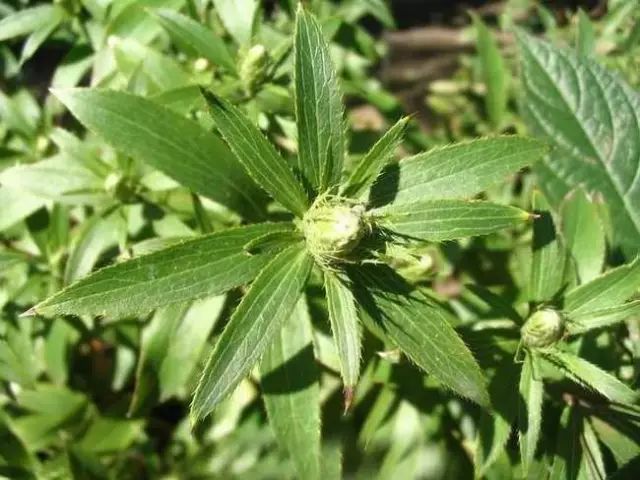
Case Study 1
Li ××, male, 71 years old, after three strokes, exhibited cognitive stagnation, remained silent all day, had a pale complexion, dry and wrinkled skin, and experienced difficulty urinating. His tongue was swollen with purple and white greasy coating, and his pulse was wiry and rapid. EEG showed focal slow waves, and cerebral blood flow imaging indicated reduced elasticity of bilateral cerebral vessels, with CT showing mild cerebral atrophy. The diagnosis was qi deficiency and blood stasis, with stasis obstructing the clear yang. The treatment should focus on invigorating qi and promoting blood circulation.
Medicinal Formula: Huang Qi 15g, Chuan Xiong 9g, Sheng Pu Huang (wrapped) 15g, Bai Zhu 9g, Chi Shao 9g, Chuan Niu Xi 9g, Chuan Duan 9g, Du Zhong 9g, Hai Zao 9g, Tong Tian Cao 9g, Chang Pu 6g, and Water Leech 3g. After half a month of treatment, cognitive stagnation improved, and the patient could manage basic daily activities. Continued treatment for six months led to significant relief of symptoms.
The spleen should ascend to be healthy, and the stomach should descend to be harmonious. The spleen and stomach coexist in the middle jiao, serving as the pivot for the ascending and descending qi mechanisms. When the spleen qi ascends and the stomach qi harmonizes and descends, the processes of transformation and generation are activated. If the spleen and stomach are not harmonious, clear qi cannot rise, and turbid qi cannot descend, leading to symptoms such as nausea, abdominal distension, and diarrhea. The ancient sage Li Dōngyuán founded the spleen and stomach school, creating formulas like Sheng Yang Yi Wei Decoction and Qing Shu Yi Qi Decoction, advocating the principle of “ascending the clear and descending the turbid.” I highly admire this principle and have developed it further in clinical practice, often using Sheng Ma and Atractylodes together to regulate the qi mechanism of the spleen and stomach. The Shen Nong Ben Cao Jing states that Sheng Ma “expels epidemic and pestilential qi, alleviating abdominal pain,” which is used to elevate spleen qi, while Atractylodes, being bitter and drying, helps to descend stomach qi. This combination of ascending and descending clears the turbid and promotes the clear, effectively treating nausea and other symptoms, especially in cases of damp-heat obstruction, where it can be supplemented with Zuo Jin Wan or Wen Dan Decoction; in cases of internal cold-dampness, it can be combined with Yu Shu Dan or Xuan Fu Dai Zhe Decoction.
Case Study 2
Zhao ×, male, 68 years old, has suffered from gastric distension and pain for many years. Gastroscopy revealed “chronic superficial gastritis with erosion.” In the past two months, abdominal distension worsened, and he frequently experienced nausea. He had previously taken medications like “Metoclopramide” and “Gastric Recovery” without improvement. Currently, the patient presents with abdominal fullness, frequent nausea, and loose stools. His pulse is thin, and his tongue is thin with a white greasy coating, indicating that the spleen qi is not ascending and the stomach qi is not harmonizing.
Medicinal Formula: Stir-fried Sheng Ma 4.5g, Atractylodes and Bai Zhu (each) 9g, Sheng Ban Xia 9g, Zhi Shi 9g, Xuan Fu Hua 9g, Dai Zhi Shi (pre-boiled) 30g, Chen Pi 6g, and Bi Cheng Qie 2.4g. After taking one dose, nausea disappeared, and after taking seven doses, all symptoms were resolved.
Atractylodes and Bai Zhu are two herbs that Dr. Yan Dexin particularly favored. Atractylodes contains volatile VA and VD, which can reduce the side effects of cold herbs such as abdominal pain and diarrhea, and can mitigate the richness of tonifying herbs like Huang Qi, Shu Di Huang, and Dang Gui, while enhancing the absorption of tonifying herbs. In Chongqing, where dampness is prevalent, and the local diet is rich, phlegm-dampness is easily generated. Therefore, I personally advocate for Dr. Yan Dexin’s use of these two herbs. Atractylodes focuses on eliminating dampness, while Bai Zhu emphasizes strengthening and warming the spleen. The degree and focus of their effects on spleen yang differ, so they should be used flexibly.
The content of this article represents the author’s personal views and is for clinical reference only. Non-professionals in traditional Chinese medicine should not attempt to self-medicate.
|
I Copyright Statement: Respect knowledge and labor; please retain copyright information when reprinting. The copyright of the content published on this platform belongs to the relevant rights holders. If there are any improper uses, please feel free to contact us for negotiation. |
Currently, over 100,000 people have followed us.















See more latest news on Traditional Chinese Medicine, Chinese herbs, health, and wellness.
Please long-press the QR code below to follow us.


